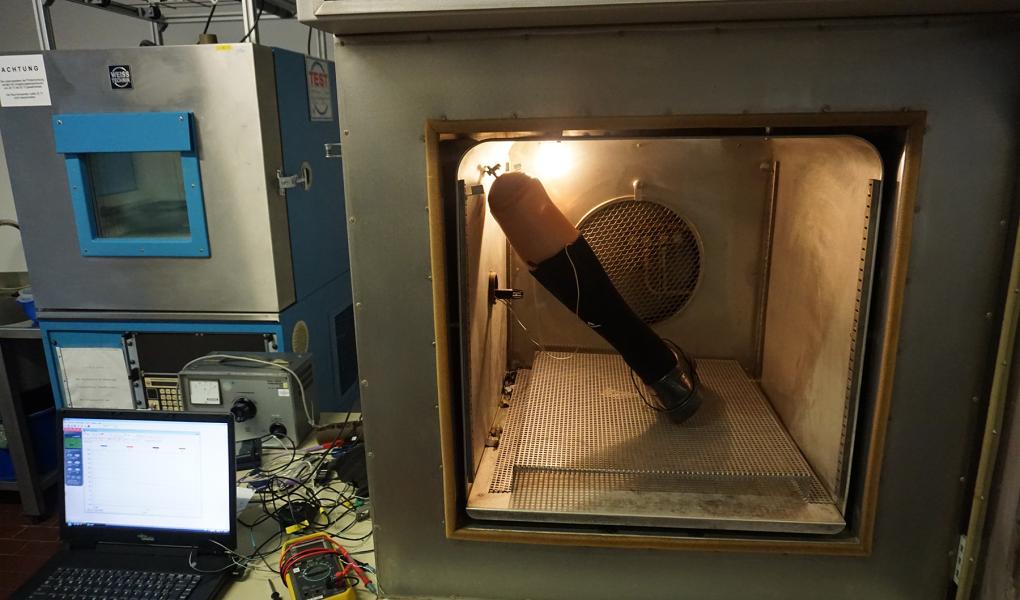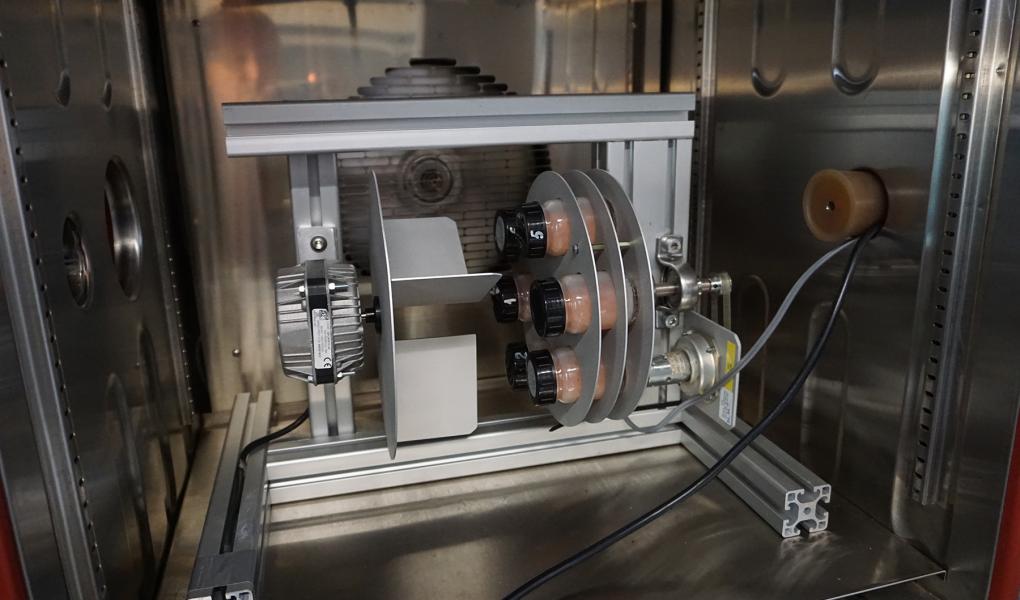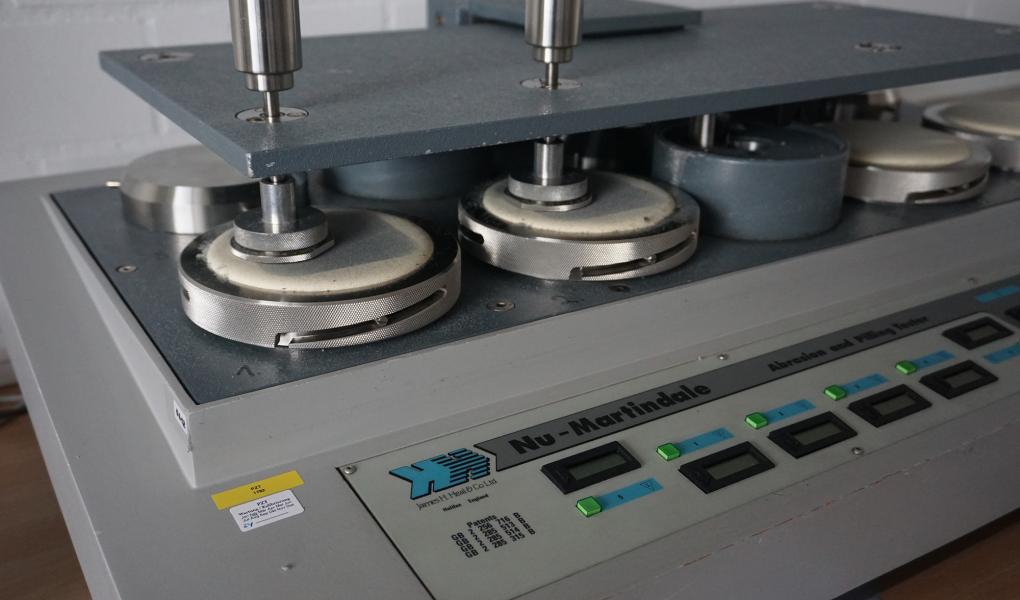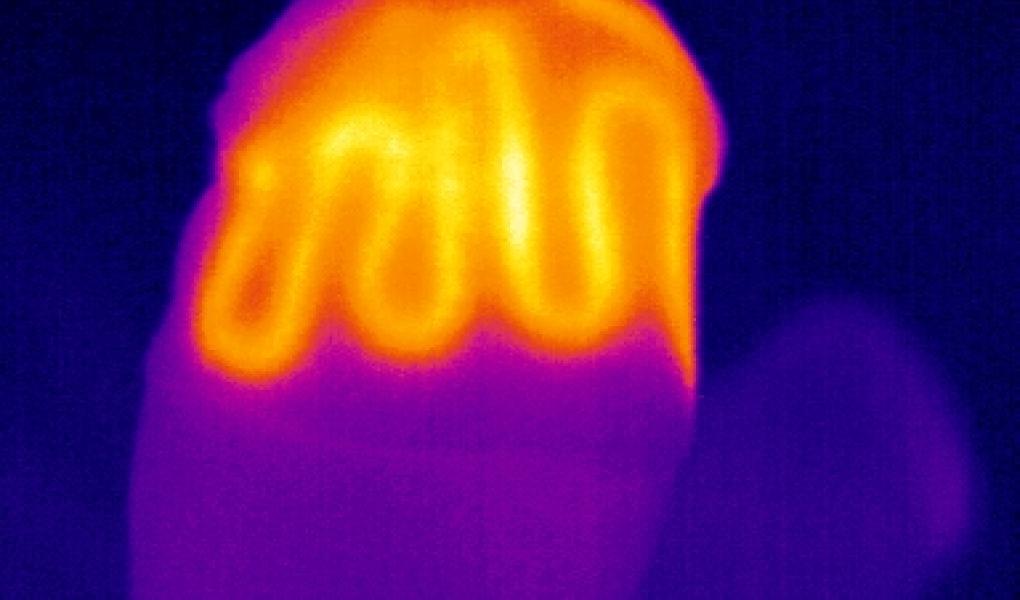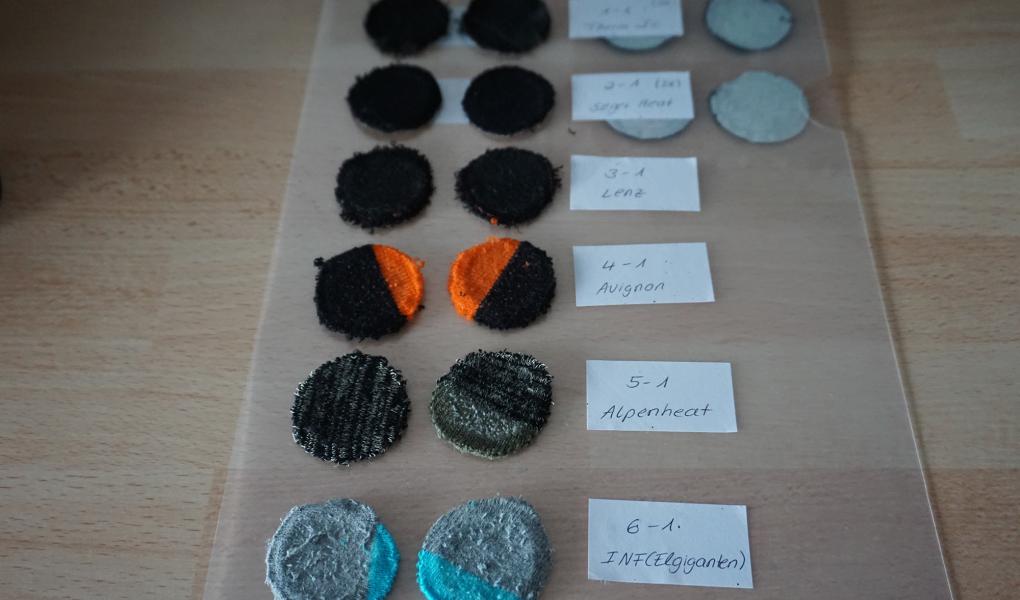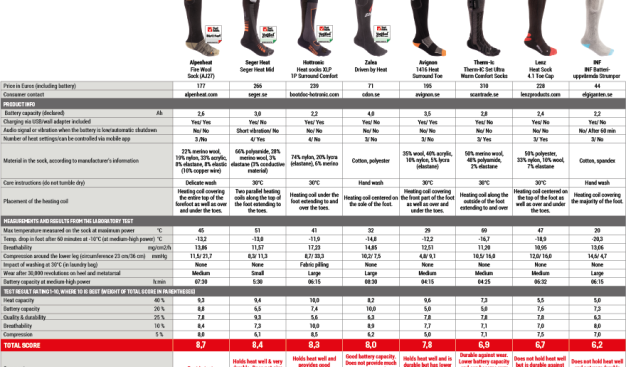This year's harsh winter serves as a reminder of how important it is to protect oneself from the cold. In the media, we receive tips on early signs of frostbite, ranging from white nose tips to sore toes. Electrically heated socks are a welcome innovation for those who have to sit still for hours during a hunting trip or embark on long ski tours.
The basic construction of the electrically heated sock relies on embedded heating wires powered by batteries. The battery can keep the feet warm for several hours before being recharged.
The temperature is regulated either on the battery holder or via a mobile app. The maximum temperature should typically only be used for a few minutes just before heading out into the cold. On some brands, the temperature also rises very quickly to an uncomfortably high level, with a risk of burning if not careful.
Testfakta has had eight brands of electrically heated socks tested at the independent laboratory PZT in Wilhelmshaven, Germany. Prices range from 499 to 3,499 SEK.
[PDF]
The heat capacity, or the ability to keep the foot warm in colder temperatures, naturally carries the most weight. In the test, the effectiveness of the sock in maintaining foot warmth at a temperature of -10°C is measured. The best socks managed to slow down the temperature drop by 12-13°C over an hour, compared to a temperature drop of over 20°C for the worst-performing sock.
There is no doubt that an electric sock makes a significant difference compared to the traditional wool sock, emphasizes test leader Thorsten Kutzner at the PZT laboratory.
– All electric socks in the test make the foot significantly warmer. Then it's always difficult to assess the contributing effect of increased blood circulation that occurs when the body is in motion.
Many Swedes have experienced long periods of severe cold this winter, with temperatures clearly below the -10°C in the test's climate chamber.
– Yes, and it would be interesting to conduct an extended practical test showing how heat is distributed in the foot under real stresses. One can suspect that socks with only one heating wire then have difficulty distributing the heat evenly, says Thorsten Kutzner.
To evaluate the durability of the socks, samples from the heel and ball of the foot were subjected to 30,000 rounds of abrasion. A demanding and revealing test where several of the socks took a beating. The most resistant to wear was the sock from Seger, which also received the second-highest overall rating in the test.
All socks endured three machine washes without problems, but it is important to emphasize that the socks must be air-dried and not tumble-dried - as it can damage the heating wires.
Breathability of the socks is important for comfort, but if the boots or shoes do not breathe, it may not matter as much. Another aspect of comfort is compression, i.e., how tightly they fit around the calves. Here, there were significant differences between the different brands, making it important to try on the sock before purchasing to ensure it feels good.
So what conclusions can be drawn from our test - which sock should one choose? It naturally depends a lot on how they will be used, believes Thorsten Kutzner.
– For the elk hunter who will sit still on watch, heat retention is the most important parameter, while for the skier, it may be more important to have the ability to regulate the temperature and for the sock to breathe well.
Some models showed very high maximum temperatures, should there be clearer warnings?
– One of the models is at a critical level. At the same time, the manufacturer emphasizes clearly that one should only use maximum power for a few minutes precisely to avoid burning oneself, says Thorsten Kutzner.
Overall, Alpenheat achieved the best results in our test. The test's most expensive sock from Therm-Ic did not receive a much higher overall rating than the cheapest from INF - which took last place.

